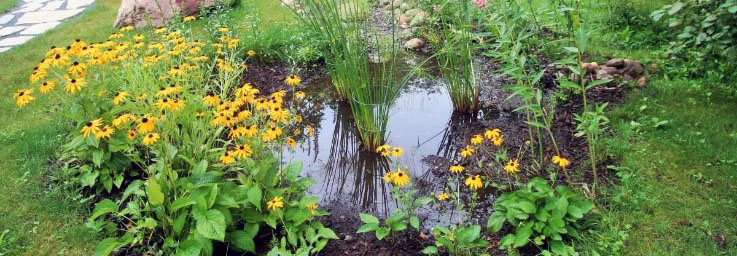How to Collect and Harvest Rain Water
Anyone who has lived in Northeast Ohio, for any amount of time, knows the instability of the weather is one could bank on…going from one extreme to the other at any given time. Harvesting rain water is a great way to plan for droughts as well as many other water emergencies.
From Ancient Times to Modern Day
It’s easy, in this modern world, to take for granted the conveniences of plumbing. Our water is treated, filtered and delivered (at a price, of course) straight to the faucets in our homes. If we need it, it’s there.
The concept of catching rain water for future use has been implemented for centuries. Collected water has been used for irrigation, consumption, cleaning, watering livestock and even supplying entire communities (or even empires). From aqueducts, to water towers and reservoirs, the advancements of water accumulation can be traced back to B.C. times, proving the importance of the first discovered renewable resource.
Now a days, concerns are focused on global warming and pollution possibly making water into a resource that is not so renewable in the future. As cities expand - trees are cut down, buildings go up, streets and driveways are paved, leaving less and less of the earth’s natural surface exposed to absorb and filter rain water. Storm water run-off picks up chemicals, fertilizers, pesticides and more - causing contamination. The more impervious surfaces that are created, the less direction rain water has to go, and the faster storm drains are filling and overwhelming water treatment plants or dumping straight into our beautiful waterways.
Check out this link from the city of Akron, for more on storm water education.
How can we help the cause?
Join the “green movement” and start by installing a rain harvesting system. This will reduce flooding in yards and basements, help reduce water and sewage bills and during those times of drought - provide plenty of water for yards, gardens and landscape maintenance.
Below are a few rain water harvesting methods on how to collect rainwater:
- Rain Barrels are used for catching water flowing from a downspout on a building structure - like your house, garage or a barn. It holds enough water to supplement landscape needs during times of drought. A faucet is usually found at the bottom of the barrel to feed your garden hose by gravity.
- Underground Cisterns can be made from many different materials - but the easiest construction, for a home owner is similar to building a pondless water feature, with rubber liner and Eco-Blox.
A containment area may be built to hold enough water to irrigate a garden or landscape all season, without the need for municipal water supply. Water is collected from roof tops via downspouts. A pump vault is in place for easy access to the water. Air lines or a small water feature could even be added to its surface for added aeration purposes to keep water from becoming stagnant.

- Rain Gardens catch water run-off that may be flooding areas of the yard or stopping it before it reaches storm drains.
Low spots or depressions in your yard, along the driveway or front of the property before the street, can be planted with native plants that tolerate saturated conditions as well as drought. Rain gardens will hold the water it accumulates until it can be absorbed into the ground both filtered and pollutant free. Not only does the rain return to the water table, but your landscape is beautiful and functional.

Visit our Garden Center location in Uniontown Ohio, Hoffman’s Water X Scapes, for Rain Harvesting supplies and tools. We have rain barrels installed around the property as well as an underground cistern that we can show you - and the supplies needed to build and install them.
Be sure to check your state laws when it comes to rain harvesting practices. Energy.gov has created a Rainwater Harvesting Regulations Map that you can check if you are unsure. For even more information about state rainwater harvesting laws and regulations, visit this National Congress of State Legislators web page.
“Ohio: Ohio allows rainwater harvesting including for potable purposes. Private water systems that provide drinking water to fewer than twenty-five people are regulated by the Ohio Department of Health (Ohio Rev. Code §3701.344). Ohio also had a Private Water Systems Advisory Council, which the General Assembly repealed in 2016 (House Bill 471).” -Data found and copied to this article as of 2/13/2020."

